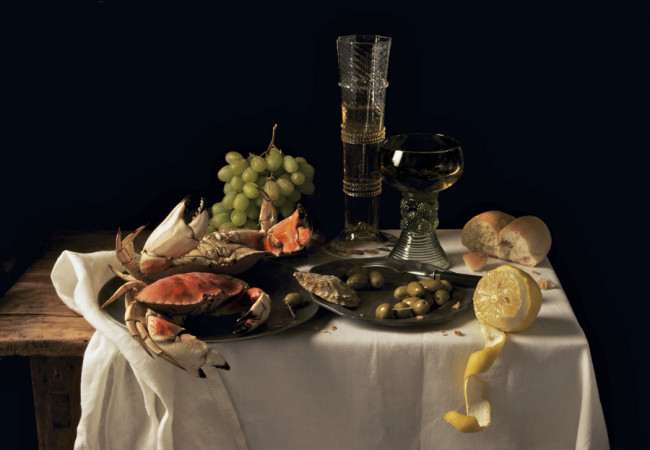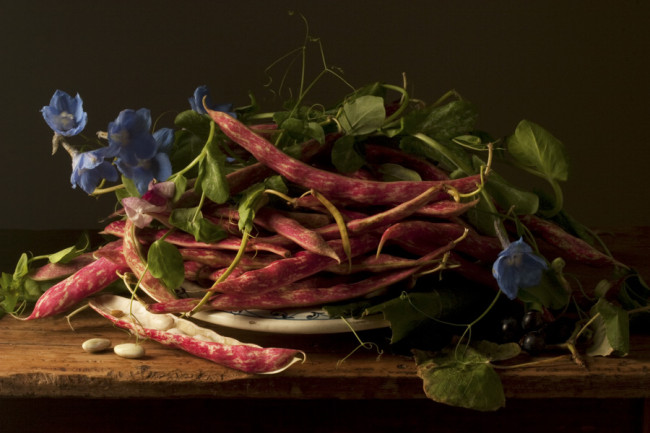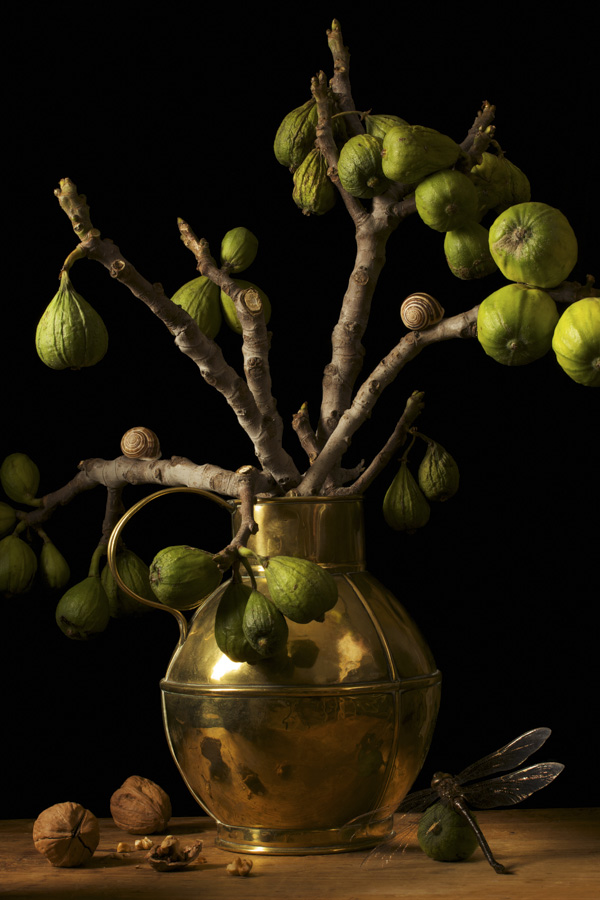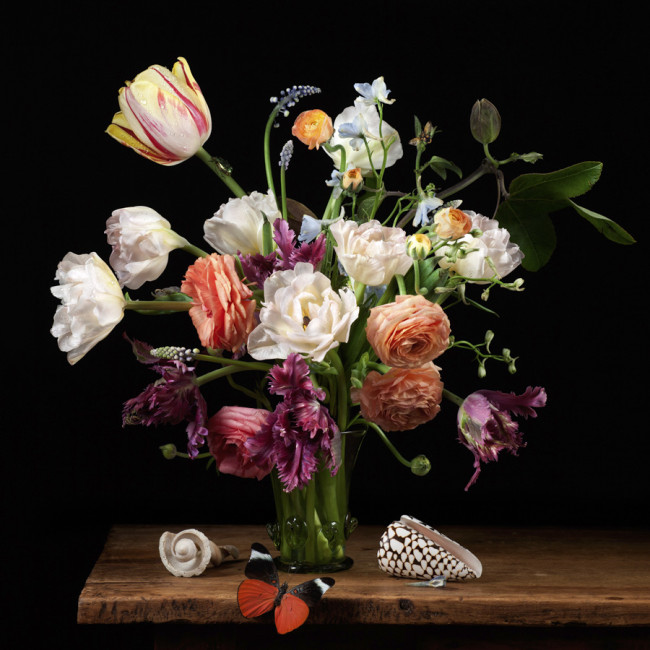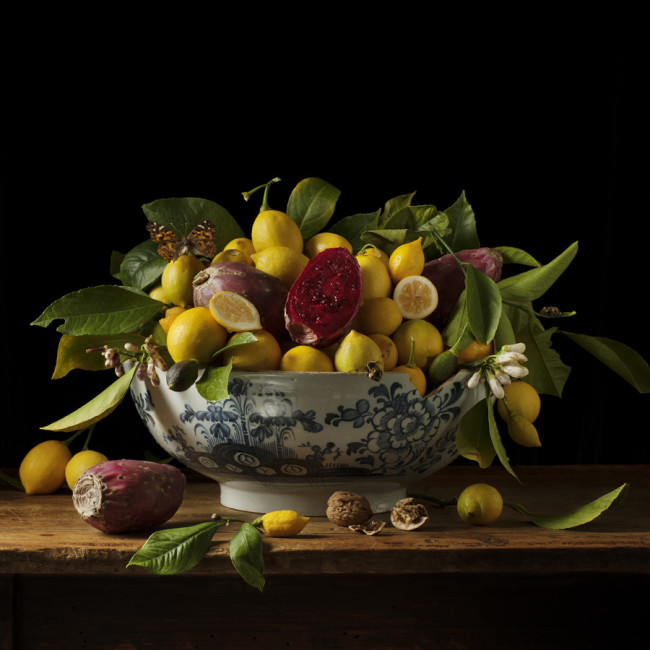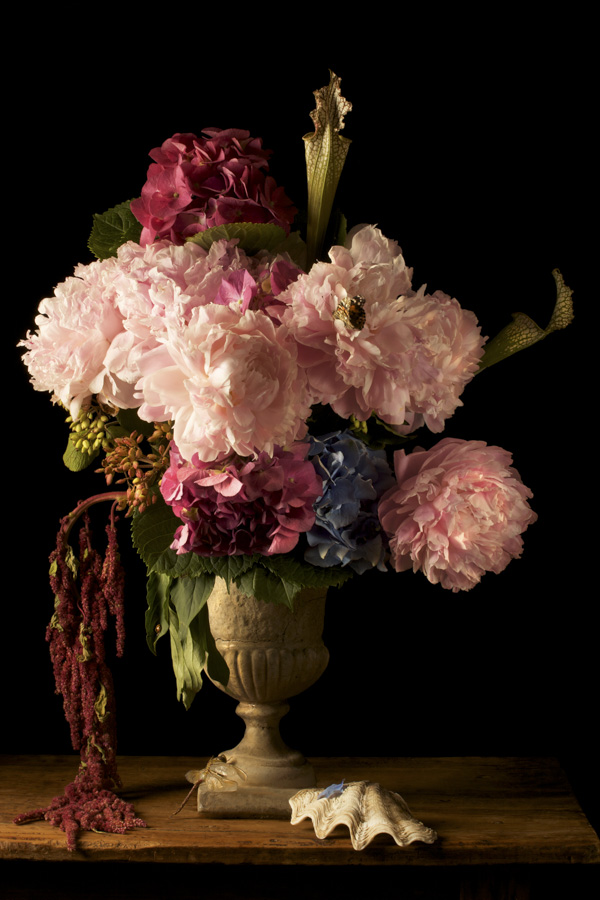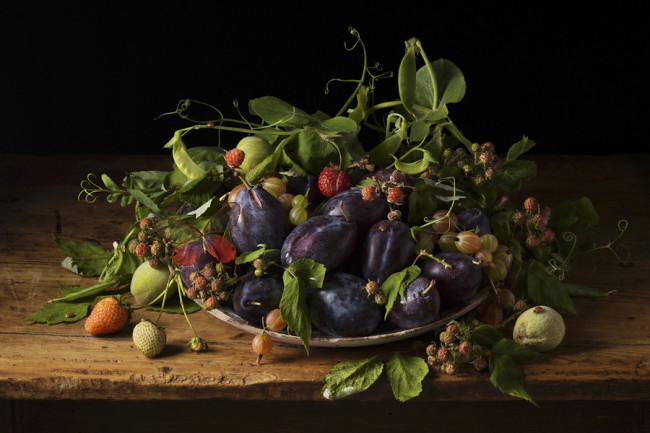Jonanthan Blaustein: When did you fall in love with photography?
Reid Callanan: My junior year of college, which I spent abroad in London. I was a geology major in college, at St. Lawrence University, and couldn’t find a geology program to mesh into in London. So I took a year at Richmond College, which offers a cross-cultural program.
I took a photo class, though I’d never done any serious photography before that. The teacher was wonderful, and that’s where I got the bug. Her guidance and inspiration, alongside the great city like London, was enough to turn my head around.
When I came back to school for my senior year, my focus was on photography. My degree was in geology, but I spent a lot of time in the darkroom, making my own pictures.
JB: Does this mean that you’ve got a hidden trove of black and white street photos from London?
RC: I do. In storage, I have pictures that I thought, at the time, were amazing photographs that would catapult me into the A-list of photography. Of course, that was a young man’s misplaced calculations and expectations.
I haven’t gone back and pulled those out. I had a lot of images from Speakers Corner which is a great place to do street photography. And there are other images from London, the British Isles and the Continent.
I traveled a lot when I was there. I ended up in the Soviet Union, for my spring trip, and went to St. Petersburg, which at that point was called Leningrad. I went to Moscow too.
I was one of the first tourists to get into the Soviet Union, back in the mid-70’s. They had just opened up the country in a limited way, and I was lucky enough to get on a trip. It was an eye-opening experience.
JB: And you took pictures?
RC: Yes, in St. Petersburg, but I was not so free to photograph in Moscow, as it was the seat of the KGB, and was a much more closed city.
Early on, I developed a love of traveling with my camera. If you fast forward to the Santa Fe Workshops over the last 10 years, a big part of our expansion has been in travel photography and workshops. Going to places like San Miguel de Allende in Mexico, or Havana, Cuba.
It’s a big part of our business right now: traveling with your camera. You open up many doors and windows when you go to a place with a camera that you wouldn’t have otherwise.
JB: What is that lesson you learn in Physics? Light particles behave differently when they’re observed than when they’re not? Is that right? I’m sure you know what I mean.
RC: One of the stories I like to tell the students when they come here, particularly in a portrait class, is how important that camera is to you, when you’re approaching a person to make their picture.
With a camera around your neck, it’s relatively easy to walk up to a total stranger, introduce yourself, and say something like “I love your face. I love the way you look. I love the way you’re leaned against the wall. And I’d really love to make some pictures of you, and in the process, just talk about who you are, and what you do in this world.
You can do that with a camera. Imagine trying to do that to somebody without one. Imagine walking up to somebody without a camera and saying, “I love the way you look. You have a great face. I’d love to spend some time talking with you.”
They’d think you were crazy.
JB: You’d get a kick in the johnson.
RC: Yup. You’re right.
JB: Allow me to switch gears. I really appreciate that you guys at the Workshops have sponsored this series of interviews. I’d love to show my gratitude by putting on my art professor hat for a moment.
I’m in Taos, and we’re all hippies up here. You bring up a large archive of photographs, and then mention that it includes pictures from the former Soviet Union, which is a super-hot-topic right now. Then you say you haven’t gone back and looked at them.
Let me put you on the spot? How about you dig the work out from storage? Who’s to say? Maybe they are the immature photos you remember?
Or maybe, as you’ve changed, you’ll see them differently. You never know until you look.
RC: I will do that.
JB: Great.
RC: You know, there’s a wonderful story that Sam Abell tells. He’s one of our long-term instructors here, and Sam has a theory that we take pictures ahead of ourselves. Meaning, when we make pictures, we don’t understand their importance, their significance, or their photographic acumen.
We’ve made them ahead of our ability to read them. What he is very fond of doing is going back through his old Kodachrome slides from 10, 20, 30 years ago. Every time he does that, he finds images that he rejected at that point.
He looks at them now, and says, “Oh my god, that is an amazing image, and I didn’t realize it when I made it.” He does that
on a consistent basis, and I’ve done it as well.
So, you’re right. If I go back to those images, which I haven’t looked at in 40 years, pictures made in Leningrad and Moscow, I will find a handful that are probably pretty interesting pictures.
JB: You’ve got to. Thanks for allowing me to have an inspirational moment. But I promise I won’t check up to see if you’ve actually done it. I’m not a Jewish Grandma about these things.
You’ve made mention of instructors at the Workshops, but we haven’t gotten to talk about how you built the program.
This is a big anniversary year, right?
RC: It’s our 25th Anniversary here in Santa Fe. Before that, I worked 15 years at the Maine Workshops. You do the math, and that’s 40 years. Basically, my adult life has been spent in the photographic workshop experience.
After college, I decided to try on photography as a career, to see if it worked for me. I lasted two weeks.
The first job was making pictures for a real estate rag, the kind of thing you see in supermarkets. My job was to photograph 35 or 40 homes in a day. To do that, I had to do drive-bys.
JB: What now?
RC: I’d slow down, point the camera out the window, take a picture of the front of house, and then I’d go on to the next address. After two weeks, I decided, if this is what a professional photographer does, I want no part of it.
It wasn’t fun, and I didn’t want to take my camera out in the evenings or weekends, because I wasn’t excited about photography.
I knew I didn’t want to be a professional photographer, but I did want to stay in the community. So then I tried a short stint in a camera store, which a lot of photographers do, because they figure they can get some discounted equipment that way.
That job only lasted two months, but one day, near the end, I was opening the mail, and there was a fold-out poster for the Maine Photographic Workshops. The name jumped off the page, because I had spent summers on the coast of Maine.
Maine as a destination was something I was interested in, and then to realize there was a school there? It was as if I just found Heaven.
So I quit the camera store job, went to Maine, and took a two-week class at the Maine Workshops from Craig Stevens and Sharon Fox. I ended up staying the next 14 years, after that two-week experience.
JB: That’s wild.
RC: I did every job that business had to offer, from being the Darkroom Manager, Store Manager, Operations Director, and the last 4 years, I was Managing Director of the programs.
In 1989, I realized I’d been there 15 years, I’d done everything I could do with the business, but I’d hit a ceiling, because the owner/director, David Lyman, wasn’t going anywhere at that point.
So I decided that life had run its course in Rockport, and I needed to go out and try it on my own. In 1990, I left for Santa Fe and caravanned across the country with my staff from Maine, and a lot of hopes and dreams. We started our first program that summer.
JB: Why did you choose Santa Fe, of all places?
RC: Two reasons: family and business. I had a brother and a sister who lived in Santa Fe, and I’d visited them a number of times in the early 80’s. I fell in love with what Santa Fe is about: the arid climate, the landscape, the mystique.
It’s much easier to go someplace when you have family there already.
JB: Of course.
RC: With respect to starting the business here, there were a couple of things I was looking for. I wanted a location that was West of the Mississippi, because I didn’t want to start a workshop program that competed directly with the Maine Workshops.
I didn’t want to start the Vermont Photographic Workshops, or the Connecticut Photographic Workshops. That didn’t make a lot of sense from a business standpoint, nor an ethical standpoint.
I wanted to go out and find a different demographic region to offer workshops to. Photography workshops need to be located in a visually inspirational setting. You need to be able to attract people to a destination where they want to go and make images. Santa Fe fulfills that requirement, and also has a wonderful photographic past and legacy to it.
The final reason was that I wanted to live here.
JB: We’re talking about a decision you made many years ago, but it’s now 2014. Jumping forward 25 years, what do you think of Santa Fe? Did it live up to your hopes and expectations?
RC: I love living here. It was a great decision on my part. When you make decisions to go places, there’s always a chance that it isn’t going to work out.
When I first got here, in the summer of 1990, was that I would wake up every morning, and the sun would be out. I wouldn’t even have to question whether the sun would come out. That was not normal for me, having spent most of my life on the East Coast.
The first few weeks, I’d ask myself, “Can this be true? Can the sun be out again?” That’s still very true today. The bright sun and the blue sky makes such a difference in the way I approach the day, and my life.
I don’t think I could now do well in a place that was overcast more often than sunny.
JB: We get addicted to the Vitamin D. Setting aside the fresh air, and all.
RC: Santa Fe has not disappointed me personally, nor for the business. Because one of the great tenets of business is “Location is everything.” We certainly have benefited hugely being based here.
Typically, if a business is going to fail, it’s in the first 5 years. We got lucky, and our timing was spot on. Moving to Santa Fe in the beginning of the Nineties, it ended up being a good decision, because that’s when Santa Fe began to explode on an international level as a travel destination.
Santa Fe started to appear in the top rankings of travel magazines. Santa Fe style and Santa Fe cuisine were getting known nationally and internationally in the early 90’s, so we benefited hugely from that exposure.
It’s still true today. I do focus groups every Friday at lunch, which is typically the final day of our workshop week. One of the questions I ask is how they found out about us and why they came.
At least half if not more say they were attracted to coming to Santa Fe, and they’ve always wanted to come here. The fact that they found a photographic workshop that was located in Santa Fe was one of the deciding factors on why they ended up coming here.
It’s a world-class destination, so that certainly helped us get over the early hump that most businesses go through.
Location, location, location.
JB: You’ve been an educator for four decades. That’s a long time. What are some of the things you’ve learned?
RC: It dawned on me fairly early in this experience of coming out to Santa Fe that my interest in and passion for education really started with my father. He was a role model, a mentor, and an educator.
He was the headmaster of a private school in Baltimore, where I grew up. I actually went to the school and got to witness very intimately the running of the school from a business and educational standpoint.
JB: So you and your Dad both spent lives in education?
RC: That is what we do here. We are an educational facility. One of the reasons that the education here works well is because people who come to this business have a great educational and inspirational experience here.
Typically, one third of our customers each week are alumni. That’s a great number, but it also means that two thirds of our audience are new to us.
One reason the experience works so well is that we take the people out of their normal, workday environment, and we embed them into a very energized, inspirational, creative environment where who they are at home falls away.
They get to live the photographic life, to coin a phrase from Sam Abell, for a week. That’s a large part of what they’re coming here for. If they’re doctors or lawyers, or homemakers, or whatever their profession is, they get to be photographers for 5 days. Though we’ve added shorter workshops recently, the core model is Monday through Friday.
People come, and they get to eat, sleep, drink and breathe photography for 5 full days.
JB: Has that always been your core audience?
RC: Our clientele has changed, from when we first started. For the first 8-10 years, our primary participant was a pro photographer. I would say that the ratio was 75% working professionals, and 25% advanced amateurs. Then the digital revolution began to take hold at the end of the 1990’s, and the pro photographic businesses were greatly challenged.
It became much more difficult for pro photographers to afford to come out to the workshops. Our audience changed, around 2000. Today, our audience is 80-85% the ardent, amateur photographer, and 15-20% working professionals.
We’re dealing with people who come from other walks of life, and they don’t get to do their hobby as much as they’d like. They have to carve out blocks of time that give fulfillment. They come and immerse themselves in a community where they get to talk photography, make pictures, get feedback, instantaneously, from their instructors. The learning curve goes through the roof, because of the single-minded focus of what you’re doing here.
JB: So you encourage that sense of dropping into a rabbit hole?
RC: We make an effort on the first night, when we meet the people, to talk about being present, turning your cell phone off, and checking email as infrequently as you can. It’s like putting a firewall up. We tell people, “You have invested a huge amount of time and money to be here. Take advantage of that investment you’ve made in yourself. This is important to you. You’re not doing it because your parents sent you here, or your boss told you to do it.”
It’s no mistake that our campus is located at a retreat center. It’s run by the Catholic Church, and is called the IHM Retreat Center. There’s also a Carmelite Monastery on campus, so it’s a very serene, cloistered, quiet facility tucked in the hills overlooking Santa Fe.
Our program is different from traditional educational institutions. We don’t have faculty that are here teaching every week. We don’t have tenure track. Our model is to bring in photographers to teach for a week, then they leave and go home.
JB: What do you think are some of the skills and personality traits that great teachers bring to the table?
RC: Great teachers are articulate. They can talk about the photographic process: not just technical information, but why people make pictures, and why some pictures are better than others.
You have to have your ego in check, so you can talk about other people’s photography, and bring yourself down to the level of the student. You may be the best editorial photographer in the world, but if you can’t bring yourself down to the level of your students, who are 3, 4, or 5 levels below you, you can’t understand where they’re at and what they need.
It’s also important to be compassionate, to understand where these people are coming from, and what they want from you. Those are the main things I look for in a teacher.
JB: Are you still making photographs yourself?
RC: Yes, I’ve been working on a series of black-and-white portraits. I like to work with projects, as I find it difficult to photograph on a consistent basis without a focus. Though I do use my iPhone for Instagram.
The project I’m working on now is in black and white, because I like to strip away the color, so it doesn’t get in the way of saying something about who they are. It becomes less representational, and more of a subjective, intuitive approach to making portraits.
The series started in Cuba, because I have more time to make pictures when I’m traveling. But it has extended now into Mexico.
Typically, I wander the streets, make digital portraits, go back to the hotel, process the images in Lightroom, decide on a couple of favorites, and make some prints. Then, I take the prints and go find the person that I photographed and hand them a print or two
The reaction is always a wonderful one. They’re very thankful, appreciative and surprised by it. That opens up the door for more portraits that tend to be more insightful, because it’s the second or third time I am working with them and the level of trust his higher.
They see that I’m for real, and I’m offering them a gift, so they want to gift me something by showing me more of themselves. And people nearby, like someone next to a vendor in a market, will see what’s going on, and realize they can get some prints too. I get more people that want to be photographed, when they see that process.
People want to show the prints to more people, so you get to meet the family. More and more layers are peeled back in that process, which helps to make more powerful, memorable, interesting pictures.
The process opens up a world of possibilities.
JB: And free tacos.
RC: I didn’t get free tacos. But I did get chickens with their heads cut off. Free fish too. It’s a process of give and take. If I can give something back to them, while taking time from them, it tends to work really well.







